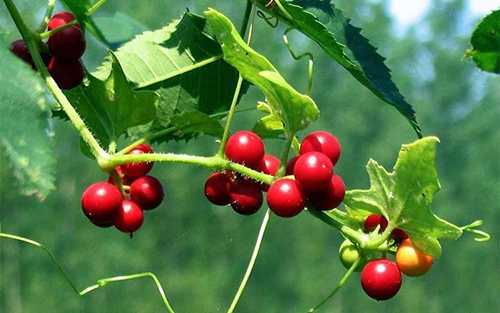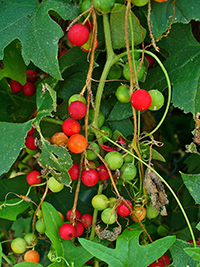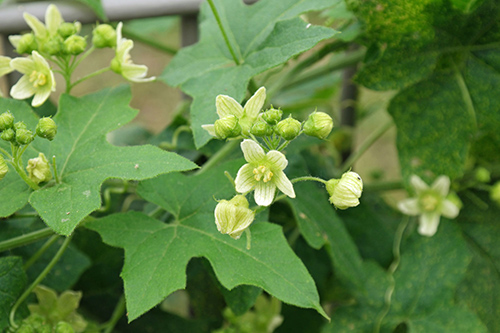Contents
The young buds on the wild hops plant can be consumed in the spring as if they were asparagus. However, be aware of its root and red fruit, which are highly poisonous. The fruit still hangs until the Fall, after the rest of the plant has dried. Not even birds consume it. It is worth distinguishing wild hops from sasparilla since their fruit is edible and has medicinal properties. Sasparilla has thorns on its stem and heart-shaped leaves.

Wild Hops Plant Scientific Facts
- Scientific synonym: Bryonia dioica Jacq.
- Other names: Red bryony, devil’s turnip, wild vine, wild white vine.
- French: Bryone.
- Spanish: Brionia.
- Environment: It is common in southern and Central Europe forests and bushes, especially near river banks. It is also found in America.
- Description: This is a climbing plant of the Cucurbitaceae family, growing to 3 m high. Its leaves have five lobules and spiral tendrils grow opposite them, sticking to other plants and trees. It has white or bluish flowers, and the fruit is a red berry.
- Parts of the plant used medicinally: The root.

Healing Properties and Warning
The wild hops plant root is large, turnip-shaped, and can grow to the size of a human head. It is very irritating to the skin. This root contains a resin and an alkaloid (bryonine), which give it drastic purgative properties. In ancient times, it was used for brain congestion and edema; however, it is no longer used since it produces intense diarrhea. At present, there are other milder remedies.
WARNING! This plant’s red berries are dangerously poisonous and can even cause death. In the case of poisoning (unlikely to occur since these berries are irritants and practically inedible), vomiting is required. Then, administer charcoal and move the poisoned person to a hospital.
Wild Bryony

White bryony, also called wood vine, is another species of the same botanical family. It has properties similar to those of wild hop plants. It is called white bryony because its flowers are white and its berries are black.
How to use Wild Hops
- Root. It has traditionally been used as a drastic laxative, but it is no longer used because it produces too energetic effects.
DISCLAIMER: All content on this website is presented solely for educational and informational objectives. Do not rely on the information provided as a replacement for advice, diagnosis, or treatment from a qualified medical expert. If you are pregnant, nursing, or have any preexisting medical concerns, talk to your doctor before using any herbal or natural medicines.
REFERENCES
- George D. Pamplona-Roger, M.D. “Encyclopedia of Medicinal Plants.” George D. Pamplona-Roger, M.D. Encyclopedia of Medicinal Plants. Ed. Francesc X. Gelabert. vols. 2 San Fernando de Henares: Editorial Safeliz, 2000. 490. Print.
- Anti-inflammatory and anti-arthritic effects of Bryonia dioica: https://www.ncbi.nlm.nih.gov/pmc/articles/PMC8363226/
- Evaluation of the analgesic and anti-inflammatory activity of ethanolic extract of Bryonia laciniosa seeds: https://www.ncbi.nlm.nih.gov/pmc/articles/PMC9788634/
- Anxiolytic-like effect of the methanolic extract of Bryonia alba L: https://pubmed.ncbi.nlm.nih.gov/22290205/
